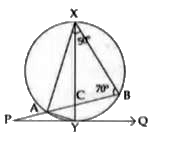A square of side 4 units lies in I Quadrant on the X-axis, with its one vertex at the origin. Plot the coordinates of the other 3 vertices of the square. Solution in Kannada
Step by step video & image solution for A square of side 4 units lies in I Quadrant on the X-axis, with its one vertex at the origin. Plot the coordinates of the other 3 vertices of the square. by Maths experts to help you in doubts & scoring excellent marks in Class 10 exams.
Updated on:21/07/2023Topper's Solved these Questions
- CO-ORDINATE GEOMETRYBOOK - ZEN PUBLICATIONCHAPTER - CO-ORDINATE GEOMETRYEXERCISE - ZEN ADDITIONAL QUESTIONS - SHORT ANSWER [SA] TYPE QUESTIONS
57 Videos
- CO-ORDINATE GEOMETRYBOOK - ZEN PUBLICATIONCHAPTER - CO-ORDINATE GEOMETRYEXERCISE - ZEN ADDITIONAL QUESTIONS - LONG ANSWER [LA] TYPE QUESTIONS
6 Videos
- CO-ORDINATE GEOMETRYBOOK - ZEN PUBLICATIONCHAPTER - CO-ORDINATE GEOMETRYEXERCISE - ZEN ADDITIONAL QUESTIONS - MULTIPLE CHOICE QUESTIONS
11 Videos
- CIRCLESBOOK - ZEN PUBLICATIONCHAPTER - CIRCLESEXERCISE - ZEN ADDITIONAL QUESTIONS ( HOT [HIGHER ORDER THINKING SKILLS] - QUESTIONS) (IIT AND IMO)
9 Videos
- CONSTRUCTIONSBOOK - ZEN PUBLICATIONCHAPTER - CONSTRUCTIONSEXERCISE - ZEN ADDITIONAL QUESTIONS ( HOTS [HIGHER ORDER THINKING SKILLS] - QUESTIONS) IIT /OLYMPIAD/ IMO
5 Videos
Similar Questions
Find the value (s) of x if distance between A (0, 0) and B (x,-4) is 5 units.
View SolutionThe vertices of AABC are A(4, 6), B(1, 5), and C7, 2). A line is drawn to intersect sides AB and AC at D and E respectively. Show that ADAB=AEAC=14. Find the area of Δ ADE and compare it with Δ ABC.
View SolutionThe distance between (a cos θ + b sin θ,0) and (0,a sin θ−bcosθ) is
View SolutionIn the adjoining figure, XY is a diameter of the circle and PQ is a tangent to the circle at Y. Given that ⌊AXB=50∘ and ⌊ABX=70∘, calculate ⌊BAY and ⌊APY.

View SolutionGiven below are the steps of construction of a pair of tangents to a circle of radius 4 cm from a point on the concentric circle of radius 6 cm. Find which of the following steps is wrong.
(P) Step 1: Take a point O on the plane paper and draw a circle of radius OA = 4 cm. Also draw a concentric circle of radius OB = 6 cm.
(Q) Step 2: Find the midpoint C of OB and draw a circle of radius BA= AO. Suppose this circle intersects the circle of radius 4 cm at P and Q.
(R) Step 3: Join BP and BQ to get the desired tangents.
View SolutionThe center of a square is at the origin and its one vertex is A(2,1). Find the coordinates of the other vertices of the square.
View SolutionWrite the coordinates of the vertices of a rectangle whose length and breadth are 5 and 3 units respectively.one vertex at the origin, the longer side lies on the x -axis and one of the vertices lies in the third quadrant.
View SolutionA vertex of a square is at the origin and its one side lies along the line 3x-4y-10=0. Find the area of the square.
View SolutionIf a vertex of a square is at the origin and its one side lies along the line 4x+3y-20=0, then the area of the square is
View Solutionवर्ग ABCD का एक शीर्ष A मूलबिंदु है । यदि वर्ग की भुजाएँ AB और AD क्रमश : x-अक्ष और y-अक्ष हों और वर्ग की भुजा a हो , तो वर्ग के शीर्षों के निर्देशांक बताइए ।
View SolutionA square of each side 2, lies above the x-axis and has one vertex at the origin. If one of the sides passing through the origin makes an angle 30∘ with the positive direction of the x-axis, then the sum of the x-coordinates of the vertices of the square is:
View SolutionThe center of a square is at the origin and its one vertex is A(2,1) . Find the coordinates of the other vertices of the square.
View SolutionThe center of a square is at the origin and its one vertex is A(2,1)dot Find the coordinates of the other vertices of the square.
View SolutionIf one vertex of an equilateral triangle of side a, lies at the origin and the other lies on the line x-sqrt3y=0 , the coordinates of the third vertex are
View SolutionA square of each side 2, lies above the x-axis and has one vertex at the origin. If one of the sides passing through the origin makes an angle 30∘ with the positive direction of the x-axis, then the sum of the x-coordinates of the vertices of the square is:
View Solution
